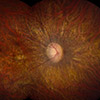The latest estimates from the U.S. Census Bureau show the 15 cities with the biggest population increases were in the South and West — with two exceptions: New York City and Columbus, Ohio.» E-Mail This
Category: Research
Researchers identify 763 proteins in human aqueous humor that nourish the cornea and the lens
Researchers conducting a comprehensive proteomics analysis of human aqueous humor samples identified 763 proteins – including 386 proteins detected for the first time – in this clear fluid that helps maintain pressure in the eye and nourishes the cornea and the lens.
‘Green chemistry’ to quantify the components of cosmetics
There are 10,000 components that can be used to make cosmetics. These components have to be monitored to guarantee consumer safety. Scientists have now developed three ‘green’ analytical methods to simultaneously analyze various components used in cosmetics. In these methods very little solvent is used and very little residue is produced in comparison with other analytical techniques.
Chipping Away At The Mystery Of The Oldest Tools Ever Found
How do you prove a rock was actively shaped and used as a tool more than 3 million years ago? Scientists found a kit of more than 140 artifacts in one spot and say the tools’ crafters were pre-human.» E-Mail This
An Author Of Paper About Changing Minds On Gay Marriage Seeks Retraction
The paper, published in Science, suggested conversations could increase support for same-sex marriage. Researchers who tried to replicate the study say the data were not collected as described.» E-Mail This
Lymphatic cells grown in the lab for the first time
For over one hundred years, scientists have debated the question of the origins of the lymphatic system – a parallel system to the blood vessels that serves as a conduit for everything from immune cells to fat molecules to cancer cells. This issue has now been resolved by Dr. Karina Yaniv of Weizmann Institute’s Biological Regulation Department. In a study reported online today in Nature, she and her team revealed how the lymphatic system develops in the embryo and for the first time managed to grow lymphatic cells in the lab.
New techniques for reprogramming stem cells target neurological disease models
As scientists overcome the technical challenges in reprogramming stem cells to produce biologically precise models of human neurons, these emerging model systems will accelerate research on…
Earth’s First Snake Likely Evolved On Land, Not In Water
Genetic sleuthing and comparisons of recently discovered fossils with living snakes point to a “protosnake” ancestor that likely had tiny hind legs and lived about 120 million years ago.» E-Mail This
Home-Brewed Morphine Is Around The Corner
What if microbes could ferment sugar into narcotics, like the way yeasts make beer? That day is quickly approaching. This week scientists report all the steps needed to make morphine in yeast.» E-Mail This
Stem cell switch on the move
The roots of a plant are constantly growing, so that they can provide the plant with water and minerals while also giving it a firm anchor in the ground. Responsible for these functions are pluripotent stem cells. In order to avoid differentiation and to remain pluripotent, these stem cells are dependent on signals from their neighboring cells. These signals are generated by only a small group of slowly dividing cells in the so-called quiescent centre inside the root. Biologists can now demonstrate how signals in plant roots determine the activity of stem cells.
Gene Therapy for Eye Disease Shows Benefits and Limitations
Gene Therapy for Eye Disease Shows Benefits and LimitationsAn experimental therapy for an inherited disorder that causes blindness improves vision, but the improvement declines with time. The findings offer insights for future therapies.




